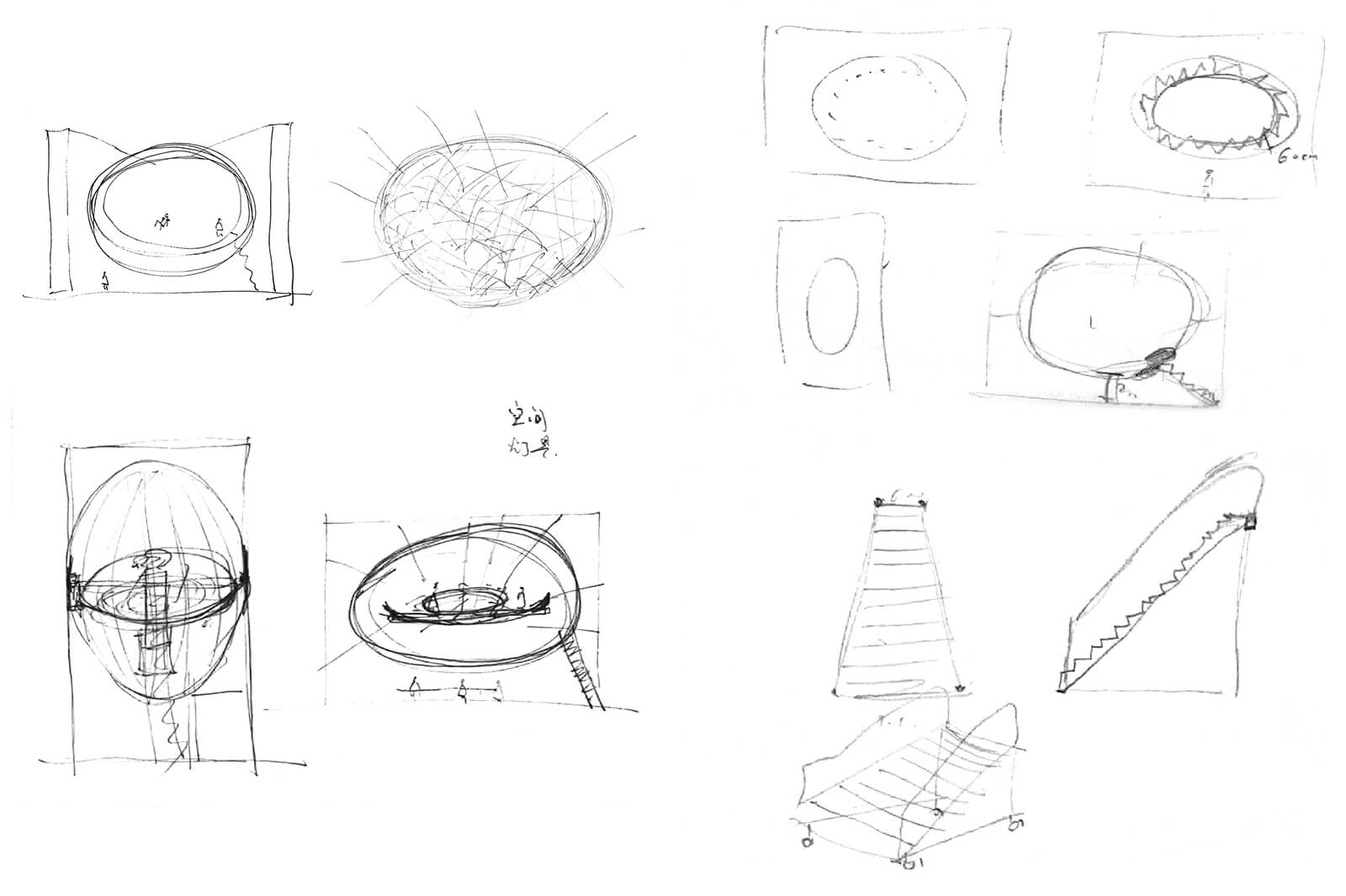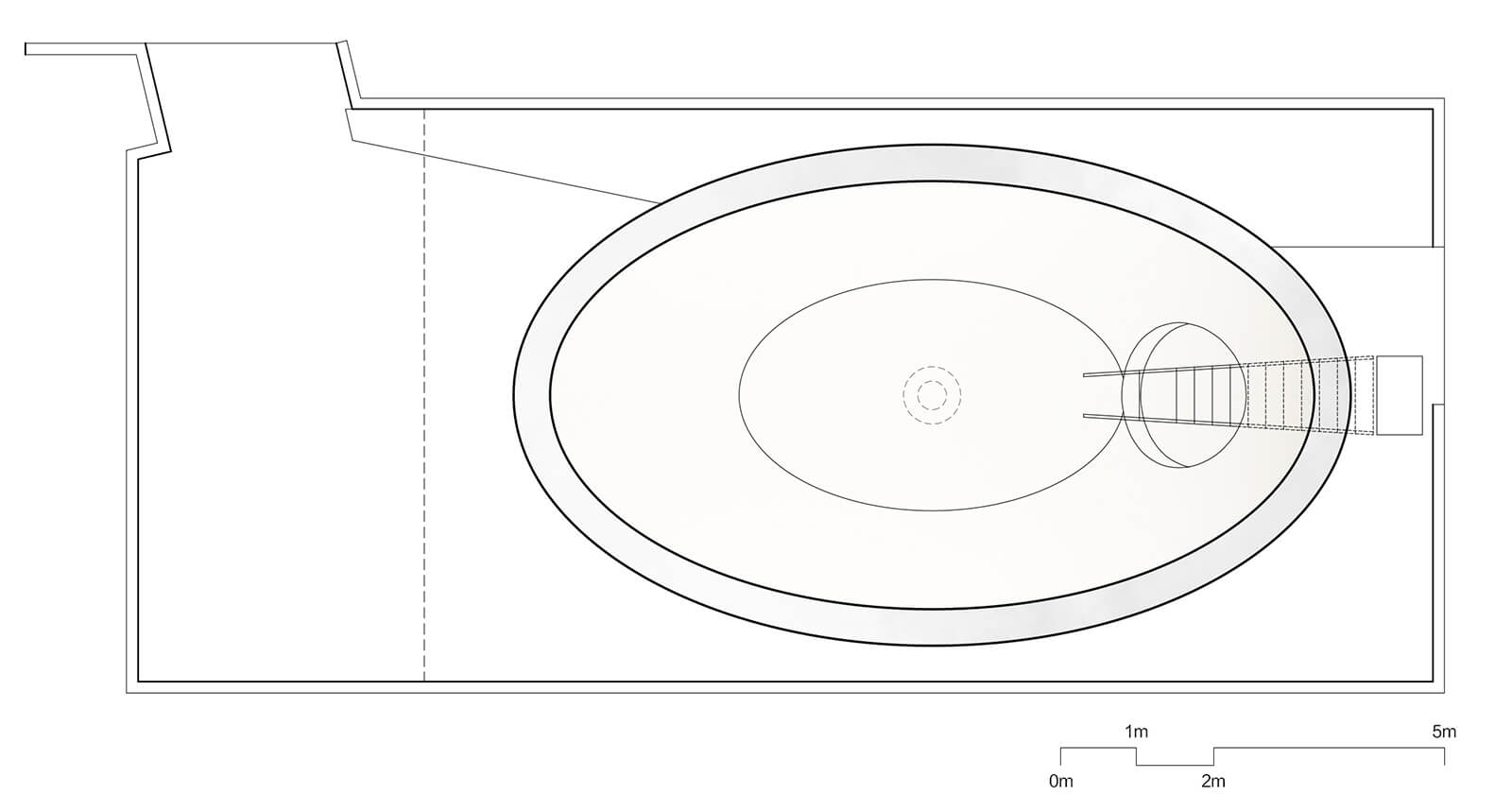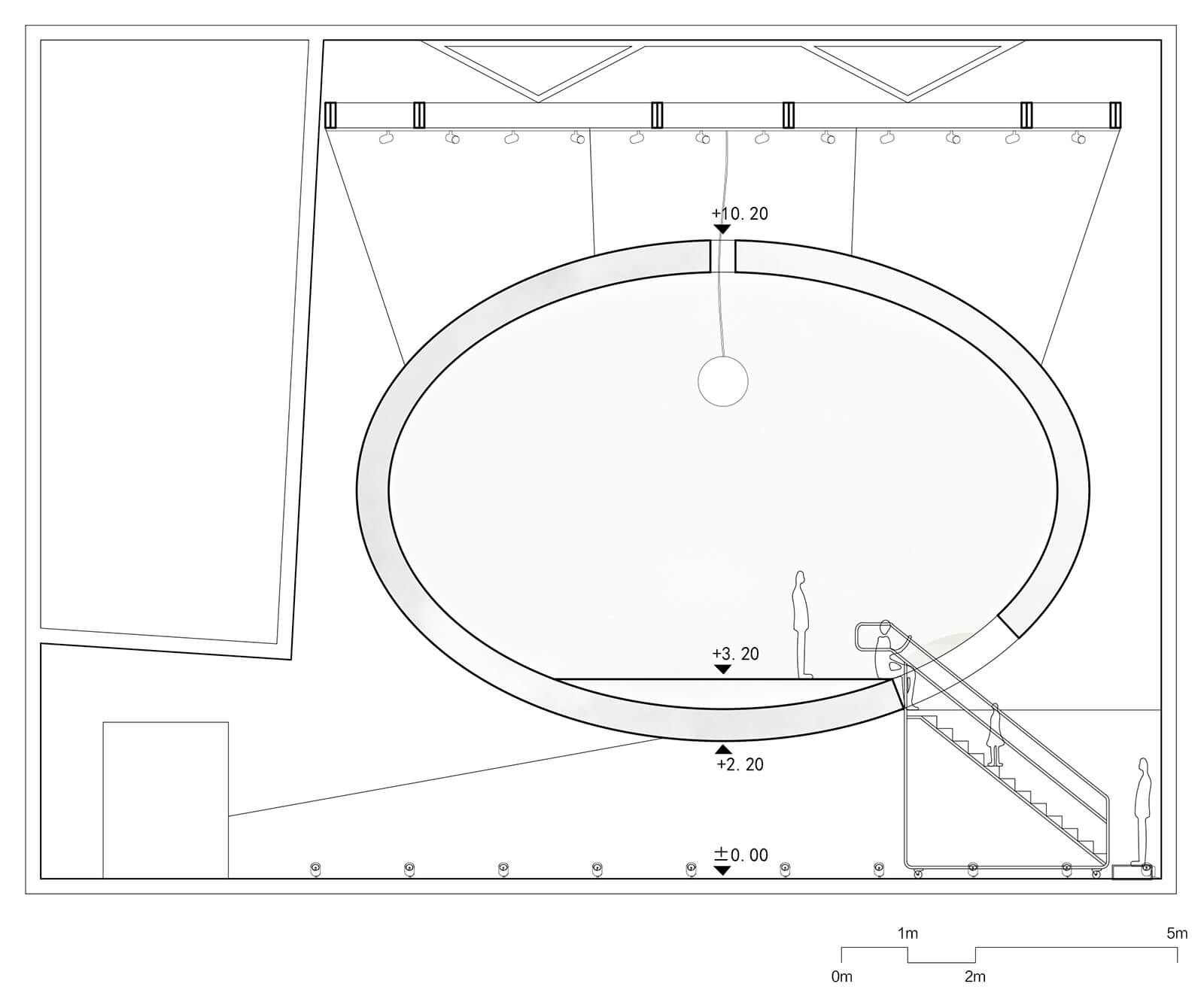2022 art recap: reimagining the future of arts
by Vatsala SethiDec 31, 2022
•make your fridays matter with a well-read weekend
by Dhwani ShanghviPublished on : Sep 17, 2024
The Matrix-Space for All is an installation in the newly opened Taikang Art Museum (TAM) in the Central Business District (CBD) of Beijing, China. Designed by Beijing-based studio CPLUS, it is the first practice of The Shared Living Room, the museum’s first architectural exhibition and as such aims to overlay an additional narrative within the museum’s spatial narrative. This layer is manifested in the form of a white, inflatable, ellipsoidal cabin suspended from the ceiling of the art museum’s Gallery A. Conceived as an antithesis to the architecture of the CBD—efficient, grandiose and often apathetic—the Matrix presents itself as a membranous orb experienced through the tactile more than the visual or the functional. The supple texture and intimacy of the matrix – symbolic of the womb, is a ‘space within a space’ designed to alleviate the alienation experienced in the urban context of the CBD.

The base of the cabin floats 2.2 metres above the floor of the 13-metre-high volume of the gallery, suspended in the air by cables attached to the roof. This act of suspension not only discriminates the mass of the cabin as separate from the gallery but also frees up space on the gallery floor. In plan, the tension created by the relationship between the cabin and the walls of the gallery (the distance being less than 1 metre at its narrowest gap) is akin to the spatial tension of expansion and contraction experienced in the urban jungle outside.

A movable steel ladder invites visitors to the interior of the air cabin, where the human body has the opportunity to interact with the soft, semi-transparent membrane in all directions. The sensory experience is further enhanced by controlling the light and sound on site, to create a warm environment reminiscent of the womb.

However, the cabin appears to have the disposition of a whimsical lovechild between a zorb and a bouncy castle, facilitating playfulness at times and introspection at others, but as such, neither does it necessarily evoke a sense of safety nor does it seem to assert freedom from alienation.
Drawing from the Tate Modern London’s definition of installation art (sometimes described as Environments) as large-scale, mixed-media pieces created for specific sites and temporary displays and interactive art as works that depend on spectator engagement, the Matrix can be placed at the intersection of the two and only fully realised through its interaction with the environment and the active participation of its audience.
An exemplary instance of this intersection, The Weather Project was exhibited at the Tate’s Turbine Hall in 2003. Designed by Scandinavian artist Olafur Eliasson, the art installation "brought the sun to the Tate" as a giant semi-circle made of hundreds of mono-frequency lamps. The volume of the Turbine Hall—five stories tall with a floorspace of 3400 sq.m.—was flooded with a fine mist with fog machines, quite literally a smoke screen to blur the robust interiors of the gallery. The ceiling above disappears as a mirror foil surface reflects the misty scene below. On the vast gallery floor mobs of winter visitors to London basked under the “sun”, so elusive to the English. The Weather Project was an exercise in bringing a desirable exterior environment to the interior and does so by integrating the gallery space to create an environment reminiscent of a sunset against the sea.
Inversely, the Matrix attempts to escape an exterior condition to create a primordial environment in a gallery setup. The lack of scenography in this case is perhaps indicative of the role of the gallery as a metaphor for the alienating urban context. And while museum architecture has developed its own special kind of alienation - from colonial elitism to social exclusion, it is in far contrast with the alienation of the hands-off high rises of the financial centre. Additionally, the cabin's stark white appearance suggests an unsettling sense of purity while also evoking a feeling of confinement. The journey from the gallery space to the interior of the cabin is thus a transition that harps on but only partially draws out the binary between the existing and the aspirational.
Interestingly, museums are not only serving as community spaces that help reduce alienation in urban settings but are also being recognised as cultural communicators that reconstruct and reconnect cultural memory through the interpretation of material culture. At the Taikang Art Museum, the immersive installation highlights the often neglected personal experiences in urban environments, encouraging individuals to collectively explore a reimagined urban experience of the city. The Matrix transcends the bounds of functional architecture by envisioning a new matrix, which accommodates a new social, cultural and political environment in which to develop.
Matrix runs at the Taikang Art Museum, Gallery A, from July 6, 2024.
by Anushka Sharma Oct 06, 2025
An exploration of how historic wisdom can enrich contemporary living, the Chinese designer transforms a former Suzhou courtyard into a poetic retreat.
by Bansari Paghdar Sep 25, 2025
Middle East Archive’s photobook Not Here Not There by Charbel AlKhoury features uncanny but surreal visuals of Lebanon amidst instability and political unrest between 2019 and 2021.
by Aarthi Mohan Sep 24, 2025
An exhibition by Ab Rogers at Sir John Soane’s Museum, London, retraced five decades of the celebrated architect’s design tenets that treated buildings as campaigns for change.
by Bansari Paghdar Sep 23, 2025
The hauntingly beautiful Bunker B-S 10 features austere utilitarian interventions that complement its militarily redundant concrete shell.
 surprise me!
surprise me!
make your fridays matter
SUBSCRIBEEnter your details to sign in
Don’t have an account?
Sign upOr you can sign in with
a single account for all
STIR platforms
All your bookmarks will be available across all your devices.
Stay STIRred
Already have an account?
Sign inOr you can sign up with
Tap on things that interests you.
Select the Conversation Category you would like to watch
Please enter your details and click submit.
Enter the 6-digit code sent at
Verification link sent to check your inbox or spam folder to complete sign up process



by Dhwani Shanghvi | Published on : Sep 17, 2024
What do you think?